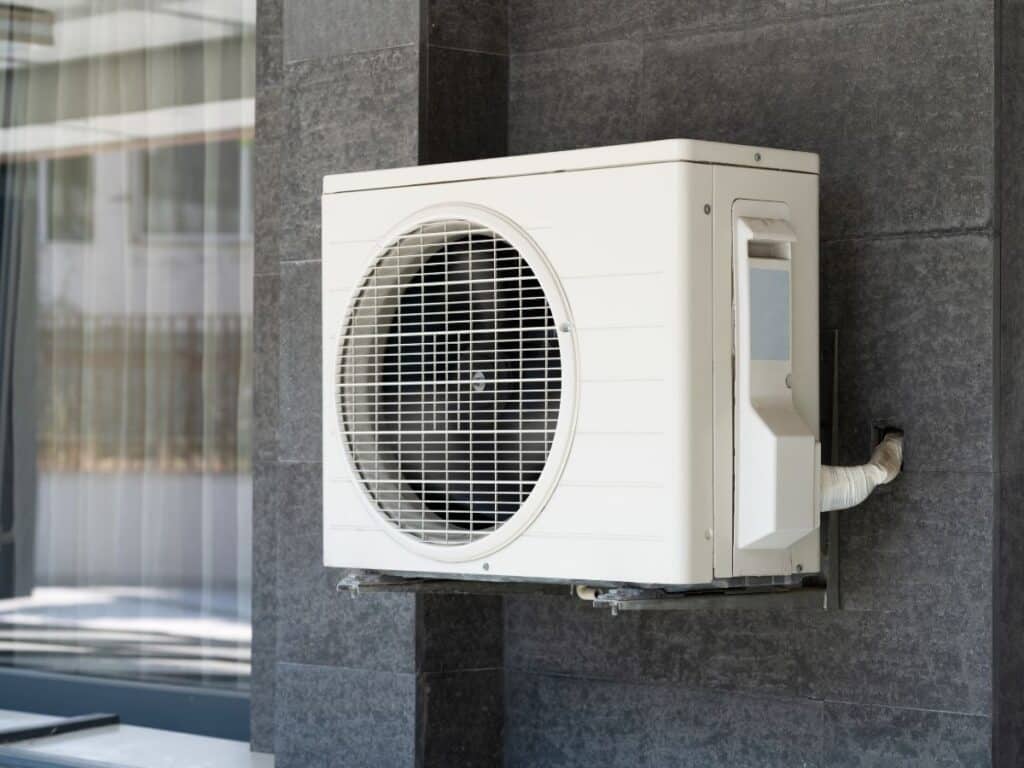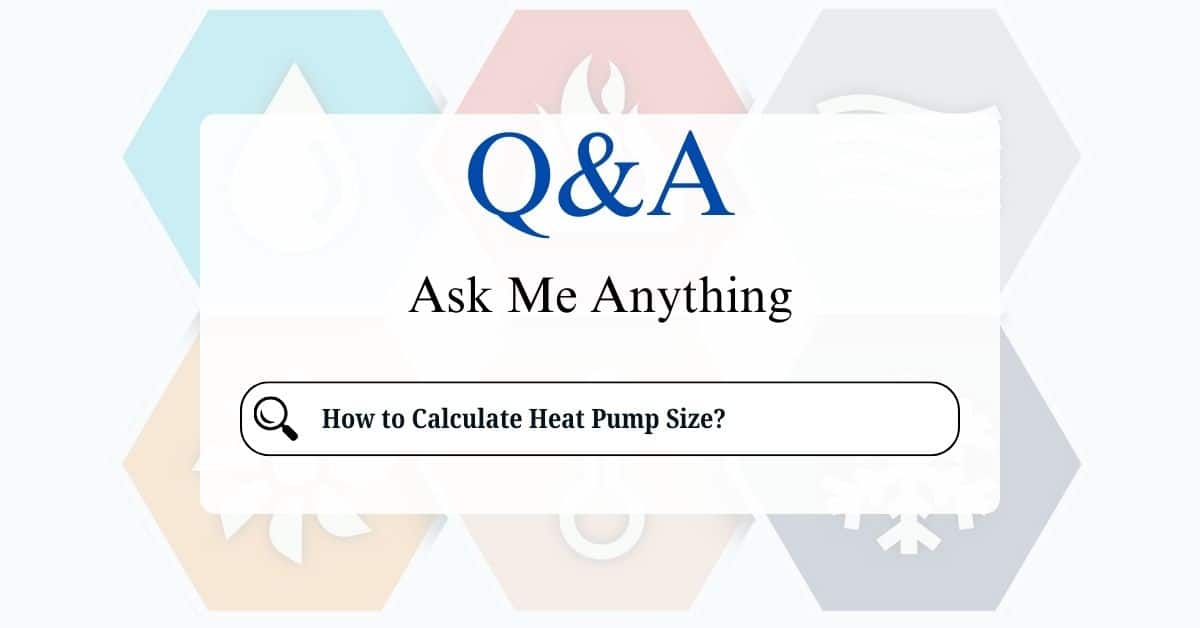Choosing the right size heat pump is crucial for efficient and comfortable heating and cooling. An undersized unit will struggle to keep your home at the desired temperature, while an oversized unit will cycle on and off too frequently (short cycling), wasting energy and potentially leading to premature wear and tear. This friendly guide will walk you through the process of calculating the appropriate heat pump size for your home.
Steps to Get an Accurate Heat Pump Sizing
- Contact a Qualified HVAC Contractor: The best way to get an accurate heat pump sizing is to contact a qualified HVAC contractor. They have the training and experience to perform a Manual J calculation and recommend the appropriate size unit for your home.
- Provide Necessary Information: Be prepared to provide the contractor with information about your home, such as:
- Square footage
- Insulation levels
- Window and door efficiency
- Ceiling height
- Sun exposure
- Number of occupants
- Get Multiple Quotes: It’s a good idea to get quotes from multiple contractors to compare pricing and recommendations.
Understanding BTU Ratings and Tonnage:
Heat pump size is often expressed in BTUs (British Thermal Units) or tons.
- BTUs: BTUs measure the amount of heat a heat pump can add or remove in one hour.
- Tonnage: One ton of cooling is equivalent to 12,000 BTUs.
For example, a 3-ton heat pump has a cooling capacity of 36,000 BTUs.

How to Calculate Heat Pump Size (BTU or Tonnage)
Heat pump size is measured in BTUs (British Thermal Units) or tons, where 1 ton equals 12,000 BTUs. Here’s a step-by-step guide to calculate the size you need:
1. Calculate the Square Footage of Your Home
- Measure the length and width of each room in your home.
- Multiply the length by the width to get the square footage of each room.
- Add up the square footage of all the rooms to determine the total size of your home.
2. Use a Climate-Based BTU Multiplier
The BTU requirement per square foot varies depending on your climate zone. Use the following guidelines:
- Zone 1 (Very Hot): 20–30 BTU per square foot (e.g., southern Florida).
- Zone 2 (Hot): 25–35 BTU per square foot (e.g., southern Texas).
- Zone 3 (Moderate): 30–40 BTU per square foot (e.g., northern California).
- Zone 4 (Cold): 40–50 BTU per square foot (e.g., northern Illinois).
- Zone 5 (Very Cold): 50–60 BTU per square foot (e.g., northern Minnesota).
For example, a 2,000-square-foot home in a moderate climate zone would require approximately: 2,000 × 35BTU = 70,000BTU
3. Determine the Heat Pump Tonnage
Convert BTUs to tons by dividing the BTU requirement by 12,000 (since 1 ton = 12,000 BTUs).
For the example above:
70,000 ÷ 12,000 = 5.83tons
You would need a 6-ton heat pump.
4. Adjust for Home Efficiency
Factors like insulation, windows, and air leakage can influence the heat pump size. Adjust your calculations based on the following:
- Well-Insulated Homes: Reduce the BTU multiplier slightly.
- Poorly Insulated Homes: Increase the BTU multiplier slightly.
- Large Windows or High Ceilings: Increase BTU by 10–15%.
5. Use a Manual J Load Calculation
For the most accurate sizing, perform a Manual J load calculation, which considers:
- Climate zone.
- Home size, layout, and orientation.
- Number and type of windows and doors.
- Insulation levels.
- Number of occupants.
You can use online calculators or consult an HVAC professional to perform a Manual J calculation.
Example Heat Pump Size Calculation
- Home Size: 1,500 square feet
- Climate Zone: Moderate (30–40 BTU per square foot)
- Calculation:
- 1,500 × 35 BTU = 52,500 BTU
- 52,500 ÷ 12,000 = 4.38 tons
- Recommended Heat Pump Size: 4.5 tons (rounding up for efficiency).
An oversized heat pump will cycle on and off too frequently, leading to reduced efficiency, uneven temperatures, and increased wear and tear. An undersized heat pump will struggle to heat or cool your home adequately, especially during extreme weather.
Methods for Calculating Heat Pump Size
There are two main methods for determining the appropriate heat pump size:
- Rule of Thumb (Less Accurate): A common rule of thumb is to use 20 BTUs (British Thermal Units) per square foot of living space. However, this is a very general estimate and doesn’t account for all the factors listed above. It’s best used only for rough estimations.
- Manual J Calculation (Most Accurate): The Manual J calculation is the industry standard for determining heating and cooling loads. It’s a detailed calculation that takes into account all the factors mentioned earlier, providing a much more accurate result.
Simplified Explanation of Manual J Calculation
While the full Manual J calculation is complex and usually performed by HVAC professionals, here’s a simplified overview:
- Heat Loss Calculation: This determines how much heat your home loses in the winter. It considers factors like insulation levels, window efficiency, and air leakage.
- Heat Gain Calculation: This determines how much heat your home gains in the summer. It considers factors like sun exposure, window efficiency, and insulation.
- BTU Requirements: Based on these calculations, the appropriate BTU rating for your heat pump is determined.
Why Proper Sizing Matters?
- Efficiency: A properly sized heat pump operates at peak efficiency, minimizing energy consumption and saving you money on your utility bills.
- Comfort: A correctly sized unit will maintain consistent temperatures throughout your home, ensuring optimal comfort.
- Equipment Lifespan: Proper sizing reduces stress on the system’s components, extending its lifespan and preventing costly repairs.
Factors Affecting Heat Pump Size
Several factors influence the appropriate heat pump size for your home:
- Climate: The climate you live in plays a significant role. Colder climates require larger heat pumps for heating, while hotter climates require larger units for cooling.
- Home Size (Square Footage): Larger homes generally require larger heat pumps.
- Insulation: Well-insulated homes require smaller heat pumps than poorly insulated homes.
- Windows and Doors: The number and quality of windows and doors affect heat gain and loss.
- Ceiling Height: Higher ceilings increase the volume of air that needs to be heated or cooled.
- Sun Exposure: Homes with more sun exposure require larger heat pumps for cooling.
- Number of Occupants: More occupants generally mean more heat generated within the home.
By following these guidelines, you can ensure you choose the right size heat pump for your home, maximizing efficiency and comfort for years to come.






